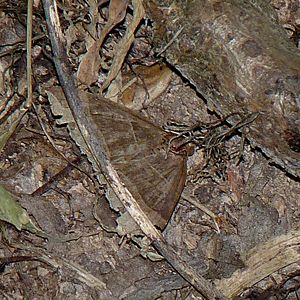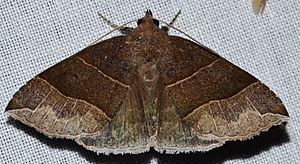Maple looper moth facts for kids
Quick facts for kids Maple looper moth |
|
|---|---|
 |
|
 |
|
| Scientific classification | |
| Kingdom: | |
| Phylum: | |
| Class: | |
| Order: | |
| Family: | |
| Genus: |
Parallelia
|
| Species: |
P. bistriaris
|
| Binomial name | |
| Parallelia bistriaris Hübner, 1818
|
|
| Synonyms | |
|
|
The maple looper moth (scientific name: Parallelia bistriaris) is a fascinating type of moth. It belongs to a large family of moths called Erebidae. This moth was first officially described by a scientist named Jacob Hübner in 1818. You can find these moths flying around in eastern North America.
Contents
About the Maple Looper Moth
The maple looper moth gets its common name because its caterpillars, often called "loopers," feed on maple trees. These moths are an important part of the natural world. They help show us how healthy our forests are.
What Does It Look Like?
The maple looper moth is a medium-sized moth. Its wingspan is usually between 33 and 43 millimeters. That's about 1.3 to 1.7 inches wide. Imagine a moth roughly the size of a large coin or a small cracker!
Where Does It Live?
This moth makes its home in the eastern parts of North America. This area includes many different states and provinces. They live in forests and woodlands where their favorite food trees grow.
Life Cycle and What It Eats
The maple looper moth has one full life cycle each year. Adult moths are active for several months. You can usually spot them flying from April all the way through September.
The young moths, which are called larvae or caterpillars, love to eat leaves. They feed on the leaves of various trees. Their favorite meals include:
- Birch trees
- Maple trees
- Walnut trees
These caterpillars are an important food source for birds and other animals.

